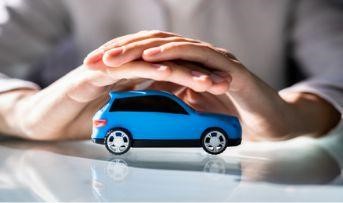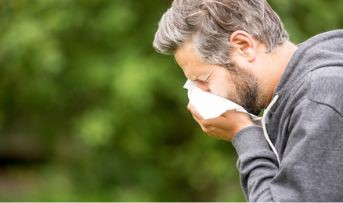General Insurance Blogs, Articles & Updates by - Magma HDI
Have us call you
- RENEW YOUR POLICY
- BUY NEW POLICY

Learn more about engine protection add-ons in two wheeler insurance
Bike engine damage can be severe and adversely impact you financially. Even though it doesn't break down often, fixing the engine can be expensive. An engine protection in your two wheeler insurance helps you in case of damage caused by water getting into the engine or oil leaking and making the engine non-functional.
You always have to select it as add-on insurance, as the comprehensive coverage does not cover the engine. For a little higher premium, you may rest easy knowing that you are protected financially if the insured bike's engine suffers damage.
The bike engine protection add-on covers the cost of repairing or replacing engine and gearbox components damaged by water intrusion, lubricating oil or coolant leaks, or a hydrostatic lock of the covered bike. The engine protection add-on is essential that you should consider when buying bike insurance.
The two-wheeler engine protection cover's advantages are as follows:
• It covers the cost of the bike's most expensive component - the engine
• Protection against physical harm caused by hydraulic lock to the engine and gearbox
• Financial protection against engine oil or lubricant leaks caused by water intrusion
• Provides monetary security
• Ideal for residents of flood-prone areas
The engine protection add-on does not cover the following items:
• Any maintenance or replacement due to normal wear and tear
• Repair or replacement of an internal part of the engine or gearbox because the driver was drunk, illegally racing, or the bike was driven while the driver's licence was invalid
• Damage or losses caused by engine corrosion
• The price of lubricants or engine oil
• Any claim made following the deadline for notifying the insurer of the incident
• Any claim in which engine parts were repaired or replaced without first notifying the insurance provider
• Any claims that are beyond the manufacturer's warranty
Do you need an engine protection add-on?
When you buy insurance from 2 wheeler insurance India, the "Engine Protection" is generally not covered. It is an advantage that is provided as an add-on. You should opt for this feature if you live in a region prone to flooding. For a small additional premium, you can relax knowing that the most expensive component of your motorcycle is covered and stop worrying about unexpected repair costs resulting from engine damage.
Who should purchase the engine protection option?
With a small cost on your annual premium, the engine protection add-on cover provides additional protection. For the following reasons, it would be best if you gave some thinking to get the bike engine protection add-on:
• If you have just purchased a new bike
• If you live in a flood-prone location
• If you want financial protection against significant damage to the engine parts
Understand that any damage to the engine's internal components can be expensive. To prevent unintended damage to the engine or gearbox components, check the engine oil level frequently. The bike should be serviced regularly as per the schedule, and you should change parts like the air filter and oil periodically to keep the engine running smoothly.
Avoid over-accelerating the engine because this could cause it to overheat and harm its internal components. Also, avoid buying duplicate parts during any post-damage repair. Lastly, buy a reliable 2 wheeler insurance India with an efficient engine protection add-on to enjoy an exceptional benefit.
Click HERE to buy the best 2 wheeler insurance India.
Disclaimer: The information provided above is for illustrative purposes only. To get more details, please refer to policy wordings and prospectus before purchasing a policy.

Bike-to-bike communication is a necessity to stay safe on long adventures
Are you planning an adventure group trip on your motorcycle? Do you have all the necessary safety gear and insurance coverage in place? While helmets, protective clothing, and two wheeler insurance online in India are essential for any rider, have you considered bike-to-bike communication? On-road communication with fellow riders ensures a safe and enjoyable ride, especially for long adventures.
In this article, we will discuss why bike-to-bike communication is essential for safe adventure rides and how it can enhance your overall riding experience.
The importance of bike-to-bike communication
Riding a motorcycle on long adventures can be an exhilarating experience. Although, it can also be challenging, especially when you are riding in a group. When riding with a group, it is essential to maintain proper communication to ensure everyone's safety.
Bike-to-bike communication allows riders to stay in touch, share information, and coordinate actions. It is advantageous when riding on unfamiliar roads or encountering unexpected obstacles.
There are numerous benefits of bike-to-bike communication. For example, it allows riders to warn each other of potential hazards, such as potholes, gravel, or other obstacles on the road. It can also help riders to navigate tricky terrains and communicate directions.
Types of bike-to-bike communication
There are several ways to establish bike-to-bike communication. The most common method is through hand signals. Hand signals are simple and effective, and they do not require any special equipment. However, they can be challenging when riding at high speeds or in noisy environments.
Another way to establish bike-to-bike communication is through Bluetooth headsets. Bluetooth headsets are wireless communication devices that can be attached to the helmet. They allow riders to talk to each other through a built-in microphone and speakers. Bluetooth headsets are convenient, and they provide clear and uninterrupted communication. However, they can be expensive and may require a specific installation.
CB (Citizen Band) radios are another way to establish bike-to-bike communication. CB radios are two-way radios that allow riders to communicate with each other within a limited range. They are effective for long-range communication and are helpful when riding in areas with poor cell phone coverage. However, CB radios are bulky and require a power source, making them less portable.
The advantages of bike-to-bike communication
Bike-to-bike communication has several advantages that make it essential for safe adventure rides:
1. It can prevent accidents by enabling riders to warn each other of potential hazards on the road.
2. It can enhance the riding experience by facilitating social interactions and camaraderie among riders. Riding with a group is often more enjoyable than riding alone, and bike-to-bike communication can make the experience memorable.
3. Bike-to-bike communication can provide security and confidence when riding in unfamiliar territories.
Bike-to-bike communication is no longer a luxury but necessary for safe and enjoyable motorcycle adventures. By using a communication system, riders can remain connected and aware of their surroundings, enabling them to make quick and informed decisions.
Communicating with fellow riders can be especially important when encountering unexpected challenges on the road or when travelling in a group. By staying in constant contact, riders can reduce the risk of accidents, get help when needed, and stay on track toward their destination.
Whether planning a long-distance ride or just a quick trip with friends, having a reliable communication system will allow you to fully immerse yourself in the journey and enjoy the ride to its fullest potential. So, be sure to equip yourself with the right tools and enjoy the ride with peace of mind knowing you are fully connected and ready for unprecedented situations.
While bike-to-bike communication is crucial for safe adventure rides, it is not the only aspect requiring attention. Insurance coverage is also an essential component of any rider's safety toolkit. Two wheeler insurance online India provides financial protection against accidents, theft, and damage to the vehicle. In addition, it also offers third-party liability coverage, which protects the rider against legal liabilities arising from injury or damage to third-party property. Ensure your trip's safety by investing in reliable two wheeler insurance online India.
Click HERE to learn more about the benefits of purchasing two wheeler insurance online India.
Disclaimer: The information provided above is for illustrative purposes only. To get more details, please refer to policy wordings and prospectus before purchasing a policy.

Let's understand consumables in car insurance
The MV Act, or the Motor Vehicles Act of 1988, regulates the legal environment surrounding motor vehicles. It states that every car owner must buy new car insurance after acquiring a new car or renew it immediately after its expiry. It is one of the three must-carry-along documents for drivers, including a PUC certificate and driver's licence. With increased regulations and growing awareness regarding the financial burden of shouldering expenses in case of an accident, the policyholder base of motor insurance has risen steadily.
Despite the importance of car insurance, it cannot be said to be a comprehensive policy. Some aspects are left out in the document's fine print and are available as add-on facilities. Therefore, while most people know the need to buy new car insurance, only some are aware of general exclusions.
A typical example is the consumables in car insurance, which is discussed in detail in this blog.
General inclusions under car insurance:
While each insurance company may offer a slightly varied version of car insurance, generally, third-party car insurance covers accidents that cause damages to other parties or their properties. Without such a policy, you will have to bear the losses and compensate the affected party.
A comprehensive policy has two aspects, a third-party car insurance policy and own damages cover. Thus, it provides enhanced protection against personal injuries and manmade and natural disasters. Since consumables are nowhere mentioned as included, it is implied that they are an exclusion from the policy.
Understanding consumables:
Consumables in accounting refer to assets used within the process and are sometimes held on standby for future use. The former part of the explanation applies to consumables in cars. These items are used in the general running of a vehicle and are subjected to continuous wear and tear.
Consumables in a car can be identified as brake oils, engine oil, lubricants, refrigerant for AC, ball bearings, nuts, screws, bolts, washers, etc. In simpler words, they aid in the efficient running of the vehicle without forming a large chunk of the cost and are put to use regularly, which is why they deteriorate faster than other car parts.
Consumables insurance:
While consumables may not appear to be a prominent aspect of the relevant cost incurred in purchasing a car, they play a crucial role in the proper functioning of the vehicle and must be noticed. It is prudent to insure your car's consumables to prevent any financial losses you may have to bear due to improper condition of consumables.
Although not included in comprehensive insurance, insurance companies provide the facility to select add-on consumables insurance by paying an additional premium for the service.
Add-on consumables insurance covers expenses incurred for replacing items like engine oil, brake oil, steering oil, coolant, AC gas, refrigerant, dust filters, air filters, engine filters, bolts, nuts, washers, screws, grease, etc. It is important to note that consumable insurance is usually provided for cars not used for more than five years.
Exclusions of consumables insurance:
It is a specific add-on insurance type that only covers relevant costs relating to consumables. The general conditions to claims are similar to any other car insurance or allied add-on facility. In the following conditions, the claim is not admissible:
● Driving without having a valid driver's licence
● Driving under the confluence of substances or liquor
● Misuse of personal vehicle for commercial use
● Prolonged delay in informing the insurer regarding the replacement of consumables
● Misuse or overuse of policy to claim the maximum benefit, as against a rational person's actions
Consumables play an essential role in a car and must be considered when you buy new car insurance. The policy is purchased by fulfilling common conditions similar to car insurance. It helps file a claim for replacement costs of consumables by informing the insurer.
Click HERE to buy new car insurance policy.
Disclaimer: The information provided above is for illustrative purposes only. To get more details, please refer to policy wordings and prospectus before purchasing a policy.

Most common summertime allergies, their symptoms and treatment
Summer is a time for fun and outdoor activities, but allergies can become a spoilsport for many people. Various allergens can thrive in higher temperatures and humidity levels, causing people to experience allergic reactions. Pollen, mould, insect stings, food, and sun allergies are among the most prevalent summer allergies. Sneezing, runny nose, and more severe reactions like anaphylaxis are just a few of the symptoms that these allergies can produce.
Here's something you must know for your relief. Buying a health insurance policy for family covers various medical costs, including those incurred because of allergies. Depending on the policy, doctor visits, prescription drugs, diagnostic tests, and hospitalisation may all be covered.
Here, we'll go into detail on the symptoms of the most prevalent summertime allergies. Understand these symptoms so that you can work out the remedies to prevent the situation from getting worse.
1. Mould allergies
Mould is a fungus that grows well in warm, moist places like restrooms, basements, and air conditioners. The summer months bring higher humidity levels, perfect for mould growth.
Inhaled mould spores have the potential to cause following allergic responses.
● Runny nose
● Itchy eyes
● Skin rashes
● Coughing
● Wheezing
Mould allergies occasionally result in respiratory issues or sinus infections that can disrupt your routine.
2. Sun allergies
Sun allergies are common during summer. The most common cause of sun allergies is an immunological response to the sun's ultraviolet (UV) radiation that results in an allergic reaction.
Sun allergy signs and symptoms include:
● Itching
● Swelling
● Burning sensation
● Redness, rash, hives, and blistering on the skin
● Headache
Sun allergies may occasionally result in fever and chills. Covered skin, a hat, an umbrella and sunscreen can be effective when heading out in the sun.
3. Pollen allergies
Hay fever and allergic rhinitis are additional names for allergies to pollen. During the reproductive process, plants release pollen. It can trigger an allergic reaction in certain people when inhaled. Symptoms can vary in severity depending on the individual and the type of pollen that causes the reaction.
Pollen allergies can cause these symptoms:
● Congestion
● Itchy and watery eyes
● Sneezing
● Fatigue
● Runny nose
● Throat irritation
● Headache
Pollen allergy episodes and breathing difficulties might occur in extreme situations. If
you are susceptible to pollen allergy, wear a mask when heading out.
4. Food allergies
Food allergies can occur during the summer, a season for picnics, barbecues, and outdoor dining.
Food allergies can cause these symptoms:
● Abdominal pain
● Diarrhoea
● Nausea and vomiting
● Anaphylaxis (a severe, life-threatening allergic reaction)
● Itching, swelling, and hives
● Difficulty breathing
Those with food allergies must remain cautious to prevent unintended exposure to allergens.
5. Insect sting allergies
Bug stings are common in summer months as Insects like bees, wasps, and hornets are more active.
Among the signs of an allergy to bug stings are:
● Dizziness
● Difficulty breathing
● Nausea and vomiting
● Diarrhoea
● Swelling, itching, redness, and pain around the sting area
● Hives
Preventing summertime allergies
You should take precautions to lower the risk of allergy reactions. Consider the following tactics:
● Verify the pollen count: Daily pollen counts for your location are available on many weather websites and apps. Before scheduling any outdoor activities, check the pollen count. Try to stay inside during periods of high pollen.
● Utilise air conditioning: The air conditioning in your house might help filter out allergies. Use a HEPA-filtered air conditioner to keep allergens out and close the windows and doors.
● Know what triggers you: Determining which allergens cause your symptoms is the first step in preventing summer allergies. This can apply to meals, pollen, mould, bug stings, etc. When you are aware of your triggers, you can take precautions to prevent them.
● Maintain a spotless home: The number of allergens in your home can be decreased with routine cleaning. Keep the carpets and upholstery clean, and wash your bedding and curtains frequently.
● Putting on protective clothes: Wear long sleeve shirts and slacks when you're outside to shield your skin from bug bites and sunburn. Pollen exposure can also be decreased by donning a hat and sunglasses.
For many people, having allergies in the summertime can be unpleasant. Sneezing and a runny nose are subtle symptoms. Anaphylaxis is a more severe symptom. It's essential to know your triggers, take precautions, and consider immunotherapy to prevent summertime allergies. Also, speaking with a healthcare professional about allergy prevention and treatment is essential. It is also crucial to have an appropriate health insurance policy for family. A comprehensive health insurance plan can help you and your loved ones stay protected from the financial adversities that may arise due to health emergencies.
Click HERE to buy a health insurance policy for family.
Disclaimer: The information provided above is for illustrative purposes only. To get more details, please refer to policy wordings and prospectus before purchasing a policy.


